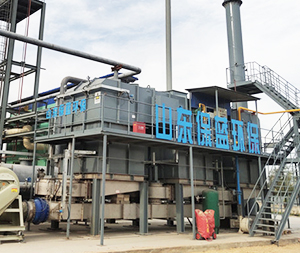Welcome to BAOLAN EP INC.
24-Hour Hotline
- Carbon Capture Utilization
- VOCs series
- DeSOx-DeNOx-Dedust
- Consumables

Contact Baolan

Address: Jurong East Road, Huantai Industrial Park, Zibo City, Shandong Province
Tel: +86-135-8959-1050
E-mail: [email protected]
Tel: +86-135-8959-1050
E-mail: [email protected]
Industry Knowledge
The difference between TO and RTO in VOCs treatment
时间: 2025-05-28 16:03
In exhaust gas treatment, TO (Thermal Oxidizer) and RTO (Regenerative Thermal Oxidizer) are two common thermal oxidation technologies, both of which decompose volatile organic compounds (VOCs) at high temperatures, but there are significant
The difference between TO and RTO in VOCs treatment
In exhaust gas treatment, TO (Thermal Oxidizer) and RTO (Regenerative Thermal Oxidizer) are two common thermal oxidation technologies, both of which decompose volatile organic compounds (VOCs) at high temperatures, but there are significant differences in principles, structures, and efficiencies between the two.
The main differences are as follows:
The main differences are as follows:
1. Working Principle
TO (Thermal Oxidizer)
Directly heats the exhaust gas to high temperatures (usually 750~950℃) through a burner, causing organic matter to oxidize and decompose into CO? and H?O.
No heat recovery: The high-temperature flue gas after combustion is directly discharged or partially recovered through a heat exchanger, but the heat recovery efficiency is relatively low (usually ≤70%).
RTO (Regenerative Thermal Oxidizer)
Absorbs the heat of the high-temperature flue gas after combustion through ceramic heat storage media, and then uses the heat storage media to preheat the incoming low-temperature exhaust gas (preheating temperature can reach above 800℃).
Efficient heat recovery: The heat recovery efficiency can reach 90~95%, significantly reducing fuel consumption.
Periodic switching: The direction of the airflow is switched through valves to achieve a cycle of heat storage and heat release (usually 2~3 heat storage chambers work alternately).
2. Structure and Composition
TO
Simple structure: combustion chamber, burner, heat exchanger (optional), discharge system.
Suitable for handling small air volumes and high concentration exhaust gas.
RTO
Complex structure: heat storage chamber (ceramic packing), switching valve, combustion chamber, control system.
Commonly designed with two, three, or multiple chambers, suitable for handling large air volumes and low concentration exhaust gas (such as 1~10 g/m³ of VOCs).

3. Energy Consumption and Economics
TO
Relies on continuous fuel supply (such as natural gas), with higher operating costs, suitable for high concentration exhaust gas (can sustain combustion).
RTO
Due to the efficient recovery of heat by the heat storage body, fuel consumption is significantly reduced (low concentration waste gas may even require no additional fuel), making long-term operation more economical.
4. Applicable Scenarios
TO
High concentration VOCs (such as in painting and chemical industries), where the calorific value of the waste gas is sufficient to support combustion.
Intermittent production or conditions with large fluctuations in waste gas volume.
RTO
Large air volume, low concentration VOCs (such as in printing, electronics, and pharmaceutical industries).
Conditions requiring continuous operation, sensitive to energy consumption.

5. Other Differences
Comparison Item TO RTO
Thermal Efficiency Lower (≤70%) Very High (≥90%)
Equipment Cost Lower Higher (complex structure)
Maintenance Difficulty Simple Higher (valves and heat storage body require maintenance)
Purification Efficiency 90~99% 95~99%
Pressure Drop Lower Higher (due to heat storage body resistance)
Selection Recommendations
Choose TO: High waste gas concentration, low air volume, or intermittent operation, and sensitive to initial investment.
Choose RTO: Low waste gas concentration, high air volume, pursuing long-term energy-saving benefits, or needing to meet strict emission standards.
Both technologies require a comprehensive assessment based on waste gas composition, air volume, concentration, and economic factors.
"TO/RTO customized solutions, VOCs purification rate ≥ 99%, helping you to easily meet emission standards!
Warmly welcome for your consulting!
"TO/RTO customized solutions, VOCs purification rate ≥ 99%, helping you to easily meet emission standards!
Warmly welcome for your consulting!

Copyright © 2014-2023 BAOLAN EP INC.
Telephone: +86-135-8959-1050 E-mail: [email protected]
Address: Jurong East Road, Huantai Industrial Park, Zibo City, Shandong Province




